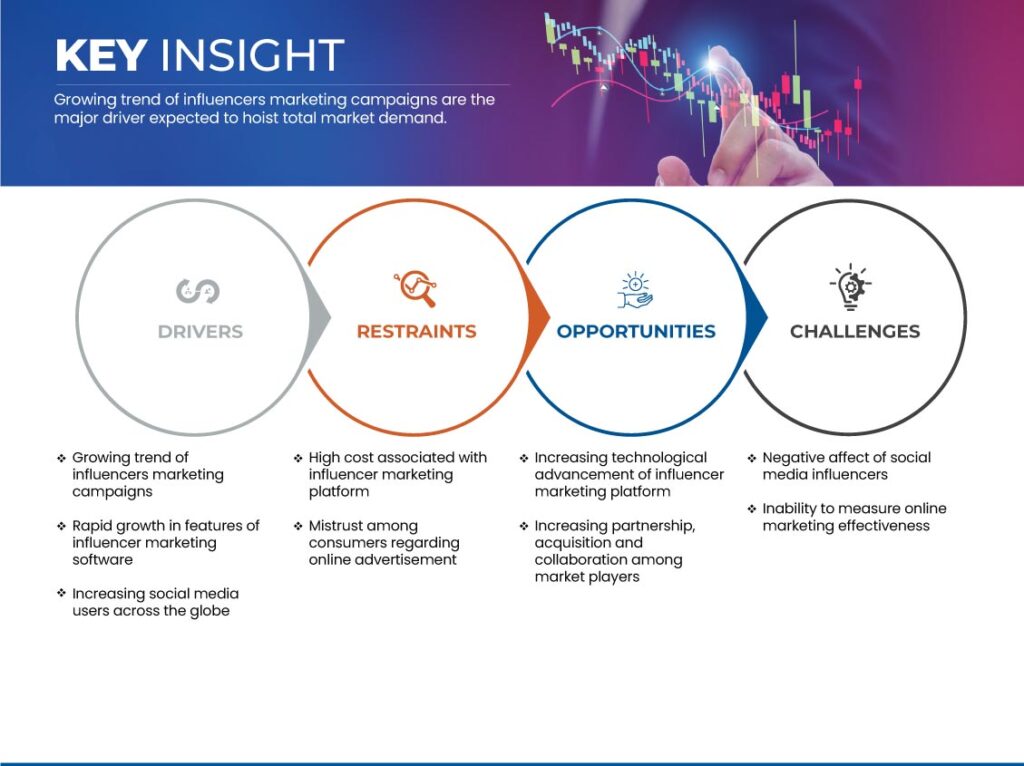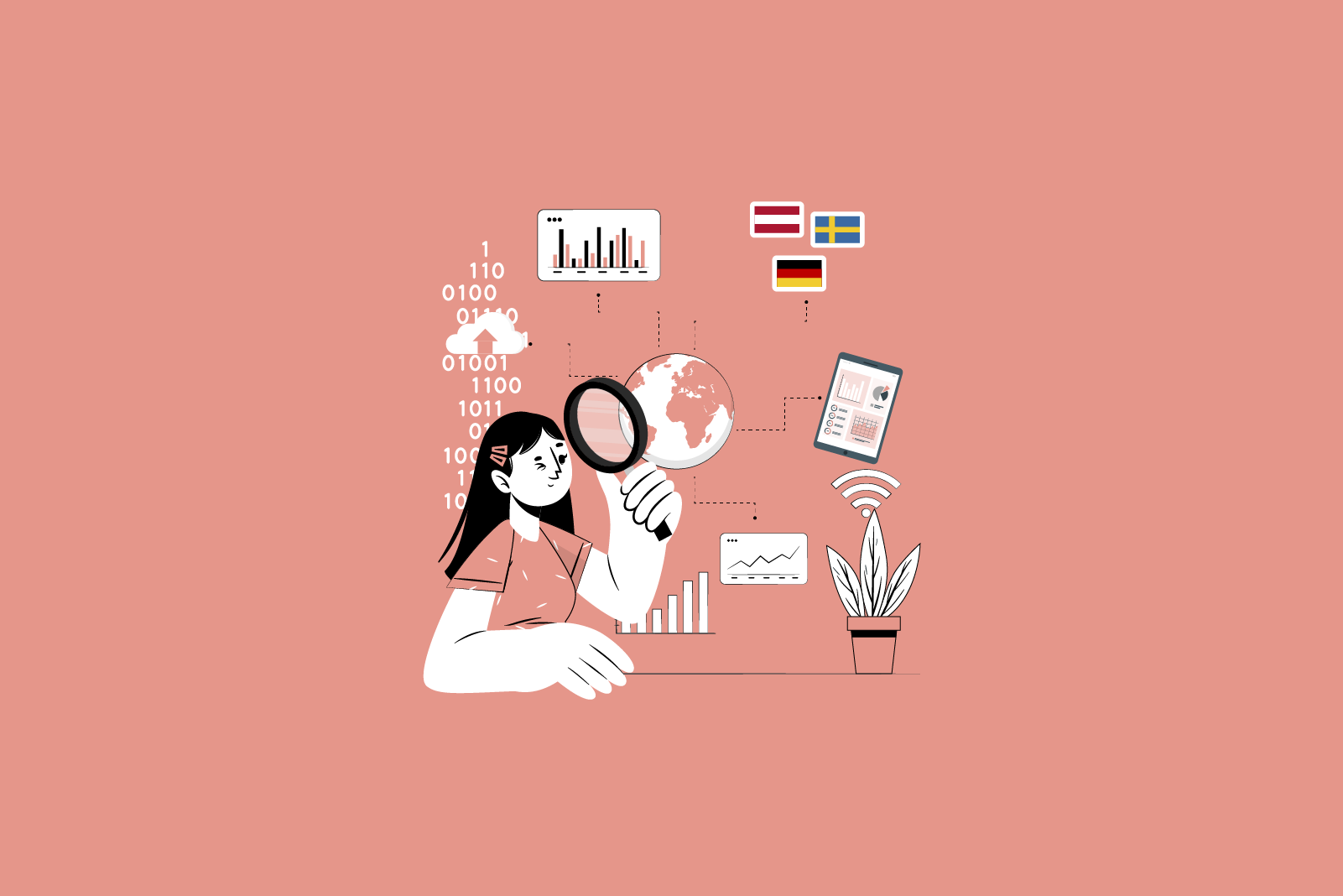
Table of Contents
This blog post will present a brief overview of influencer marketing in German-speaking countries. With 83 million people and one of the largest economies in Europe, this is a German-speaking country. We will use data from Statista, a reputable market data provider. This will illustrate the current state and future of influencer marketing in German-speaking countries.
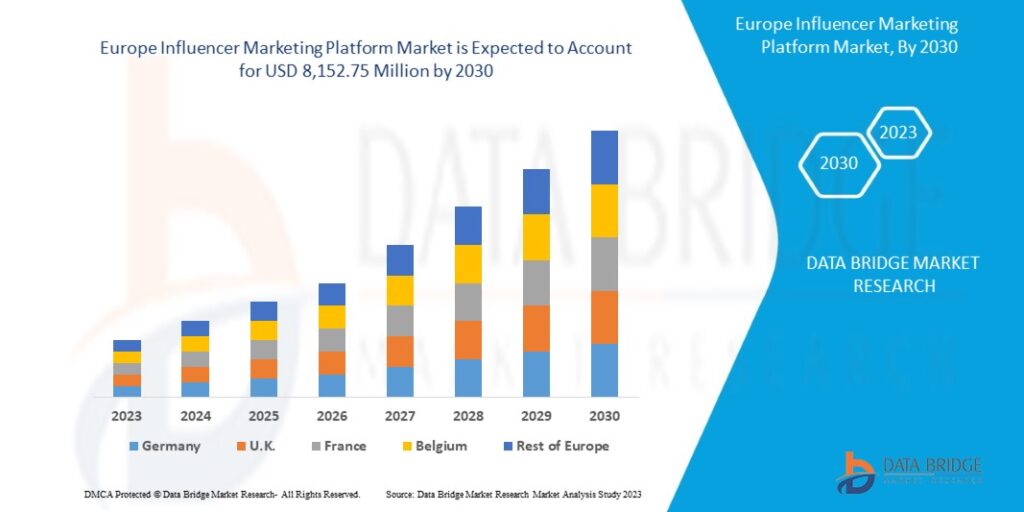
#Key statistics
According to Statista, the influencer marketing industry in Germany was worth **1.2 billion euros** in 2020 and is expected to grow to **1.5 billion euros** by 2023.
- The number of social media users in Germany was **45 million** in 2020 and is projected to reach **47.4 million** by 2023. This means that more than half of the population is using social media platforms such as Facebook, Instagram, YouTube, TikTok, and Twitter.
- The most popular social media platform for influencer marketing in Germany is **Instagram**, followed by **YouTube** and **TikTok**. Instagram has over **25 million** monthly active users in Germany, while YouTube has over **23 million** and TikTok has over **10 million**.
- The leading YouTube channel in Germany as of February 2023 is **Gronkh**, a gaming influencer with over **12 million** subscribers. The second most popular channel is **Bibi’s Beauty Palace**, a beauty and lifestyle influencer with over **7 million** subscribers.
- The average engagement rate for influencer posts on Instagram in Germany is **3.8%**, which is higher than the global average of **3.6%**. The engagement rate measures how much the audience interacts with the influencer’s content through likes, comments, shares, etc.
- The most common type of influencer collaboration in Germany is **product placement**, followed by **discount codes** and **giveaways**. Product placement involves featuring or mentioning a brand’s product or service in the influencer’s content, while discount codes and giveaways offer incentives for the audience to purchase or try the product or service.
## Trends and data
- One of the main trends for influencer marketing in these countries is the rise of **micro-influencers**, who are social media personalities with a smaller but more loyal and niche following. Micro-influencers typically have between **10,000 and 100,000** followers and can offer more authentic and personalized content than macro-influencers who have millions of followers.
- Another trend for influencer marketing in German-speaking countries is the increasing demand for **transparency** and **authenticity** from both brands and consumers. Influencers are expected to disclose their partnerships with brands and follow ethical guidelines to avoid misleading or deceiving their audience. Consumers are also more aware and critical of influencer marketing practices and prefer influencers who share honest opinions and values that align with their own.
- A third trend for influencer marketing in German-speaking countries is the growing importance of **video content**, especially on platforms like YouTube and TikTok. Video content can offer more engaging and immersive experiences for the audience than static images or text. Video content can also showcase more aspects of the product or service, such as features, benefits, reviews, tutorials, etc.
Some data that can help brands and influencers optimize their influencer marketing campaigns in Germany are:
- The best time to post on Instagram in Germany is between **12 pm and 3 pm** on weekdays and between **9 am and 11 am** on weekends. This is when the audience is most active and likely to see and interact with the influencer’s content.
- The most popular categories for influencer marketing in Germany are **beauty**, **fashion**, and **lifestyle**. These categories appeal to a wide range of consumers who are interested in trends, tips, inspiration, etc. from influencers they trust and admire.
- The most effective way to measure the success of influencer marketing campaigns in Germany is by using **key performance indicators (KPIs)** such as reach, impressions, engagement, conversions, sales, etc.
Key statistics, trends, and data for influencer marketing in Germany:
•Germany is the fourth-largest market for influencer marketing in the world, behind the USA, China, and Brazil.
•In 2020, the influencer marketing industry in Germany is expected to reach $1.17 billion.
•The number of influencers in Germany has grown by 17% from 2019 to 2020.
•Germany has the third-highest number of Instagram influencers in Europe, behind the UK and France.
•The average influencer engagement rate in Germany is 5.5%, which is higher than the global average of 4.7%.
•The most popular platforms for influencer marketing in Germany are Instagram, YouTube, and TikTok.
•German influencers have a higher retention rate than the global average, with 38% of their followers retained after one year.
•The most popular content formats used by influencers in Germany are videos, photos, and stories.
•The average cost of working with an influencer in Germany ranges from €50-€500 per post.
Key statistics, trends, and data for influencer marketing in Austria:
• Austria has seen a steady increase in influencer marketing over the past few years.
• In 2020, the influencer marketing industry in Austria was estimated to be worth $32 million.
•The average cost per influencer post in Austria is €215.
• The majority of influencer marketing in Austria is concentrated on Instagram, with over 90% of campaigns taking place on the platform.
• The most popular topics for influencer marketing in Austria are fashion, beauty, lifestyle, and travel.
• The average engagement rate for influencer marketing campaigns in Austria is 7.2%. • The average influencer in Austria has an estimated reach of over 20,000 followers.
• Over 60% of influencers in Austria are female, and the majority of them are between the ages of 18 and 34.
Key statistics, trends, and data for influencer marketing in Switzerland
• The influencer marketing industry in Switzerland is estimated to be worth CHF 11.4 million in 2021.
• The Swiss influencer marketing industry is predicted to grow at a CAGR of 20.4% between 2021 and 2026.
• The top three influencer marketing platforms in Switzerland are Influenster, Socialbakers, and Traackr.
• Swiss influencers are most likely to be found on Instagram, YouTube and Facebook, with Instagram having the highest share of influencers in the country.
• The average influencer in Switzerland has 16,000 followers, with the top 10% of influencers having more than 160,000 followers.
• Swiss influencers typically charge between CHF 20 and CHF 500 per post.
• The most popular topics for Swiss influencers are fashion, beauty, lifestyle, food and travel.
Comparison of Key statistics, trends, and data for influencer marketing in German-speaking countries vs worldwide
German-Market
• Germany, Austria, and Switzerland are the largest German-speaking countries in Europe.
• According to influencer DB, Germany has the highest number of influencers (11,737) followed by Austria (3,813) and Switzerland (3,617).
• Instagram is the most popular platform for influencer marketing in German-speaking countries, followed by YouTube and TikTok.
• The top five industries for influencer marketing in German-speaking countries are fashion & lifestyle, food & beverage, travel & lifestyle, beauty & wellness, and health & fitness.
• According to Influencer DB, the average cost per influencer in Germany is €150, followed by Austria (€125) and Switzerland (€125).
Worldwide
• According to Statista, the global influencer marketing market is projected to reach $15 billion by 2022.
• Instagram is the most popular platform for influencer marketing worldwide, followed by YouTube and Facebook.
• The top five industries for influencer marketing worldwide are fashion & lifestyle, beauty & wellness, food & beverage, health & fitness, and travel & lifestyle.
• According to Influencer Marketing Hub, the average cost per influencer post in the US is $200, followed by the UK ($150), Australia ($125), and Canada ($100).
Influencer marketing in German-speaking countries: problems and solutions
The problems:
1. Overregulation:
Influencer marketing is heavily regulated in Germany. Therefore, companies and agencies must adhere to strict guidelines to comply with legal requirements.
2. Inexperienced Influencers:
Many influencers do not have adequate experience in influencer marketing. This can be difficult for companies and agencies as they may not be able to achieve the desired results.
3. Dependency on Platform:
Another issue is the dependency on the platform. Companies and agencies must ensure they engage across multiple platforms to reach a broad target audience.
4. Uncertainty Over Data Protection:
To avoid any problems, companies, and agencies in Germany must adhere to strict data protection regulations.
5. Insufficient transparency:
Another issue is the lack of transparency. Companies and agencies must ensure they are open and transparent about all aspects of influencer marketing to protect their reputation.
The solutions:
Companies and agencies can implement various solutions to solve influencer marketing issues in Germany. Firstly, they should ensure they are compliant with all legal regulations. Secondly, they should partner with experienced influencers to achieve the best results. Thirdly, they should ensure they engage across multiple platforms to reach a broad target audience. Fourthly, they should ensure they comply with all data protection regulations. Finally, they should be open and transparent about each aspect of influencer marketing to protect their reputation.
How to find social media influencers (Instagram) in Germany?
To begin with, you need to determine your goals and target audience. You will be able to narrow down your search and find influencers that are relevant and aligned with your brand by identifying who you are trying to reach and what their interests, preferences, and pain points are.
The second step is to do some research and use some tools. On Instagram, you can find influencers by browsing hashtags, exploring geotags, checking out competitors’ accounts, or using third-party platforms.
CoCo in a German-speaking country for finding influencers!
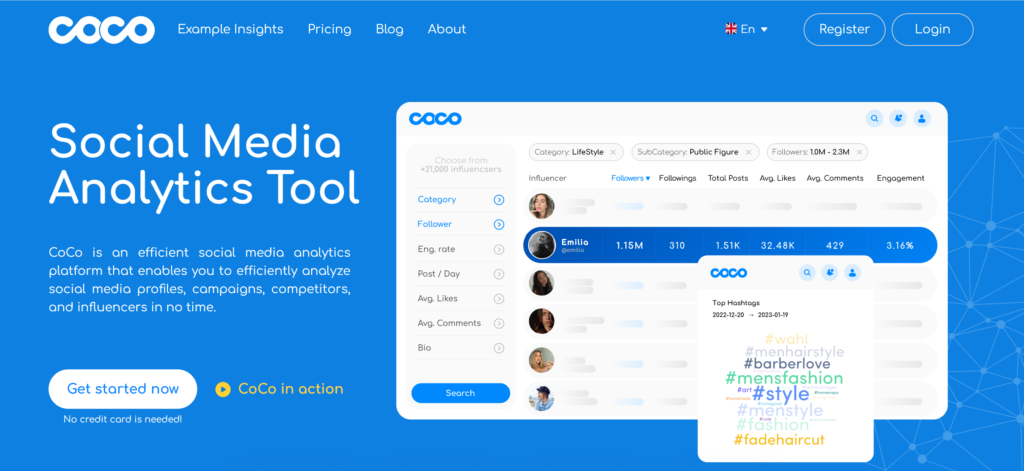
Here, we have a third-party platform that will do all the above tasks for you: It will create, manage and optimize your influencer campaigns, providing you with comprehensive data and insights. You can also use it to monitor and track your Influencer marketing campaigns and make changes as needed. Finally, it will help you analyze results to optimize future campaigns.
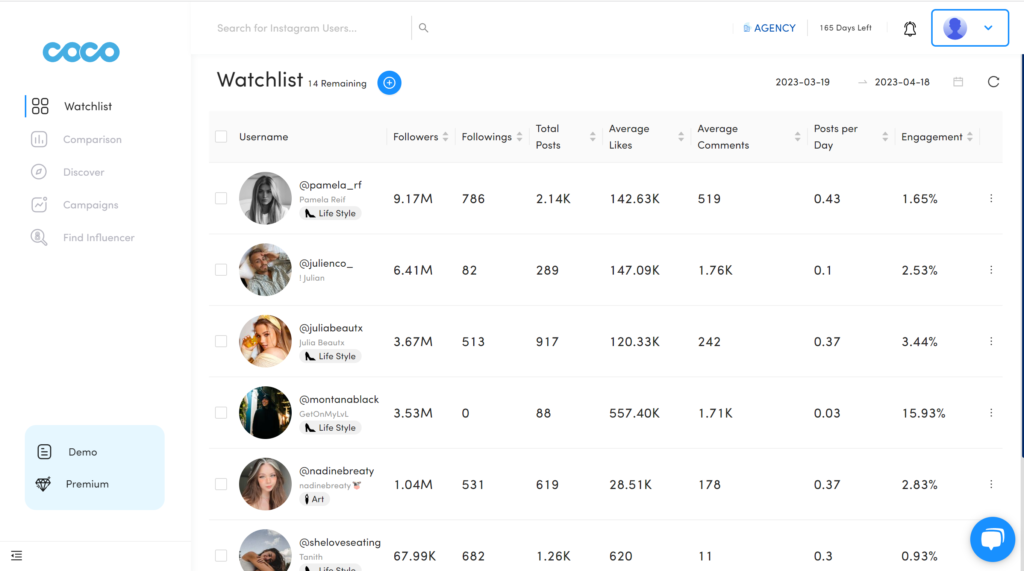
CoCo provides data and insights into their performance. You can search for influencers by category, audience size, engagement rate, and more. You can also compare them with other influencers, and write reviews.
Different methods of using CoCo exist:
Target:
Set your targeted influencer profiles and categories while indicating your preferred Cost-Per-Engage and other performance metrics.
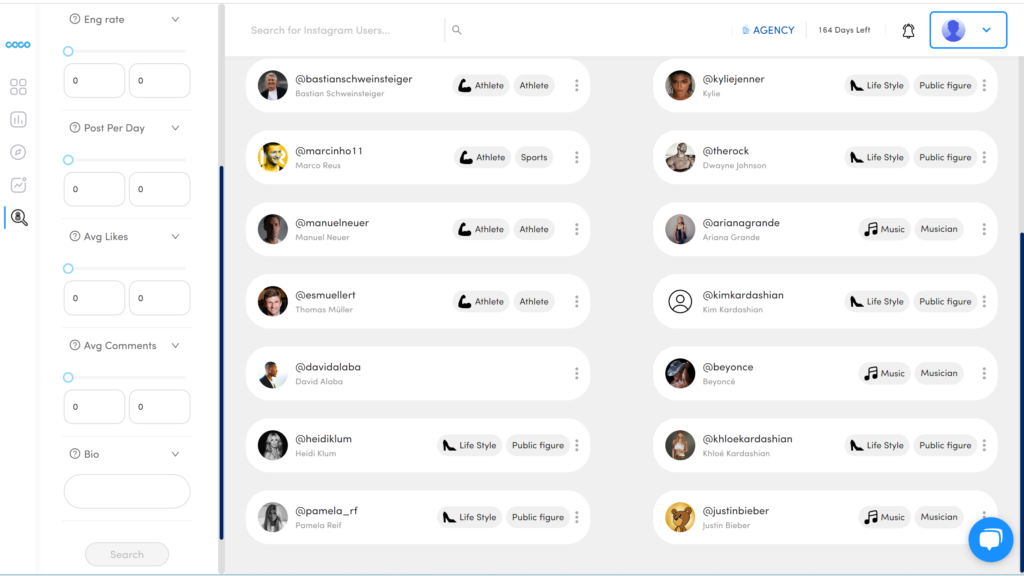
Identify:
Discover category-specific and brand-aligned Influencers to promote your campaign through our database
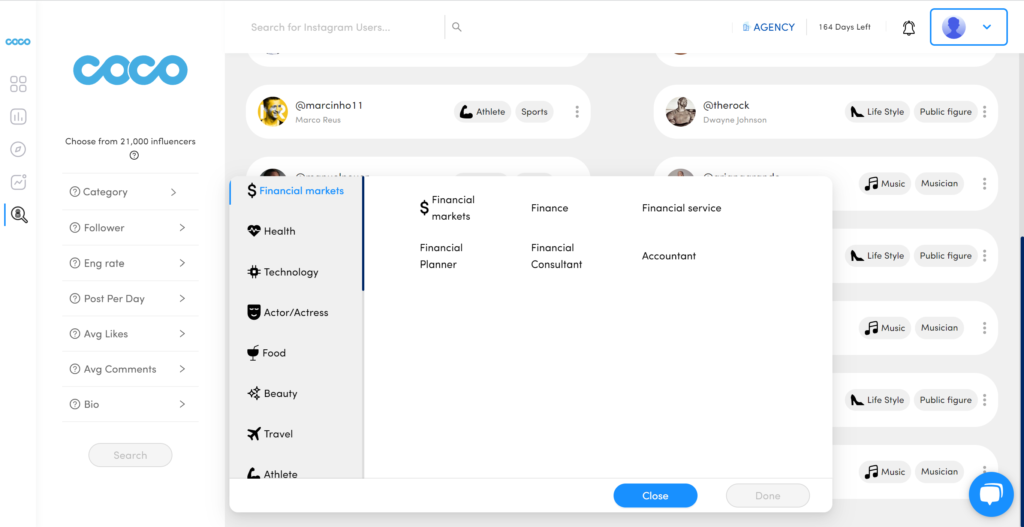
Amplify:
Utilize your list of match Influencers to create optimized visual content that engages your targeted audience and amplifies your brand
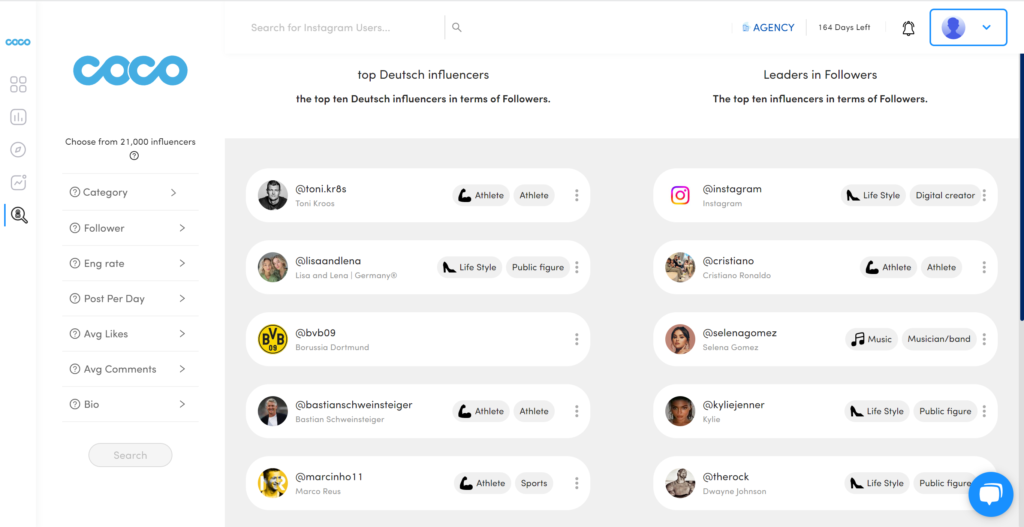
Track:
With our dashboard, you can track influencer marketing performance, measure ROI, and pay based on results.
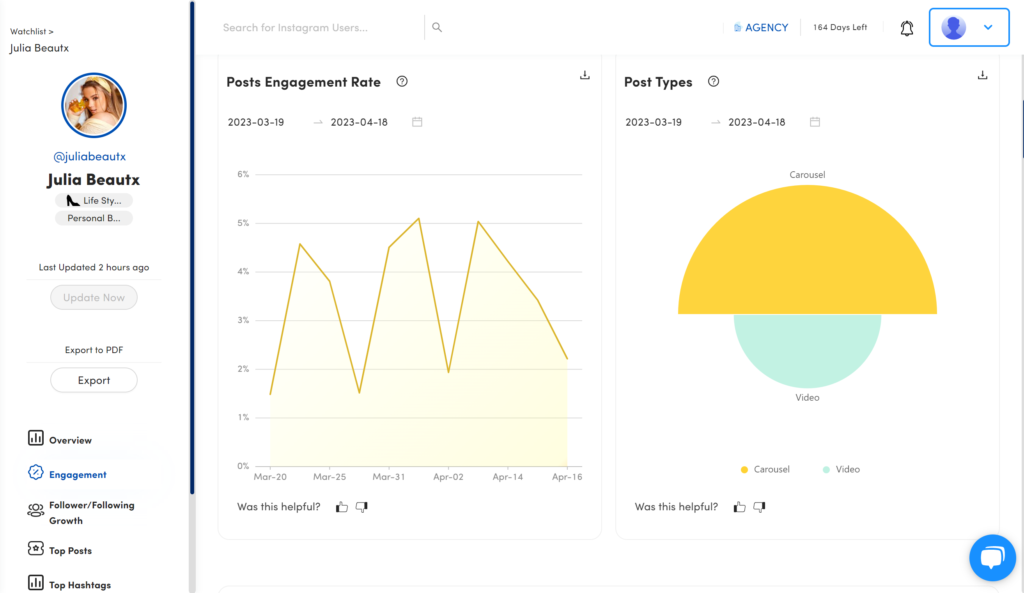
You need to reach out and build relationships
Once you have a list of potential influencers in Germany, you need to contact them and pitch your offer. You should be clear about your expectations, deliverables, budget, timeline, and terms of agreement. You should also be respectful, friendly, and professional. Remember that influencers are not just vendors, but partners who can help you grow your brand awareness and trust.
I will conclude by saying this:
Marketing professionals can find it challenging and rewarding to find influencers in German-speaking countries. Influencers can increase brand awareness, generate leads, and drive conversions among their loyal and engaged followers. For your campaign to succeed, however, you must consider a variety of factors, including the influencer’s niche, audience size, engagement rate, content quality, and reputation. There are also cultural and linguistic differences between German-speaking regions, such as Germany, Austria, and Switzerland, which you need to remember. Researching and analyzing the influencer market in these countries will enable you to identify the best candidates for your brand and establish a long-term relationship.
